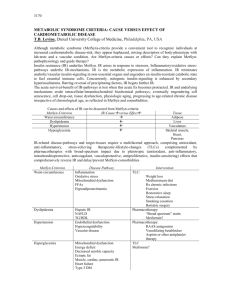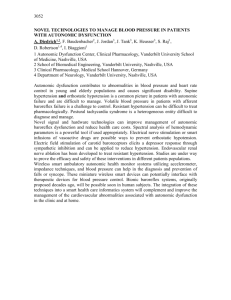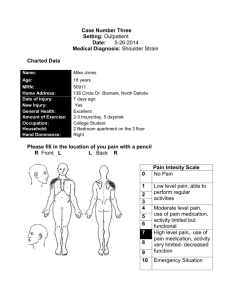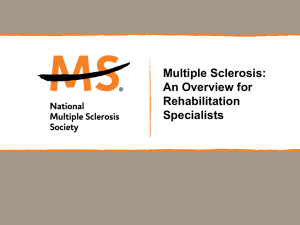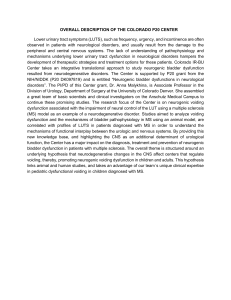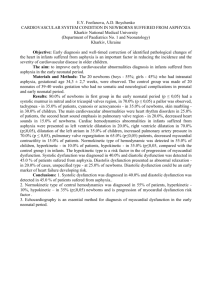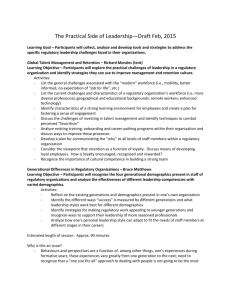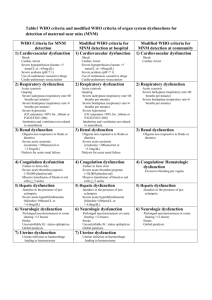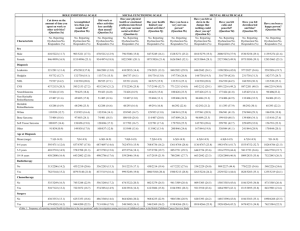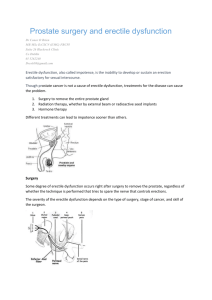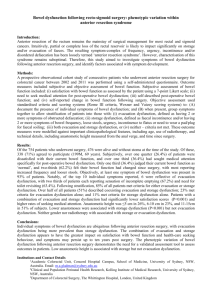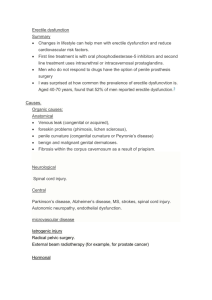O-19 - DFSG
advertisement
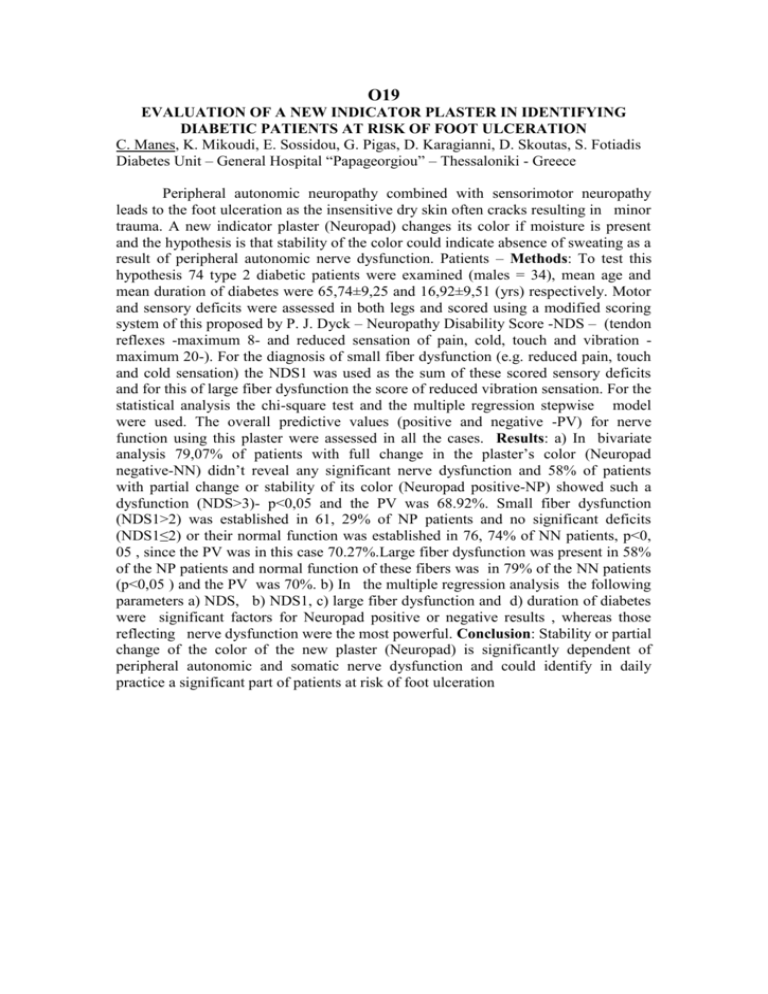
O19 EVALUATION OF A NEW INDICATOR PLASTER IN IDENTIFYING DIABETIC PATIENTS AT RISK OF FOOT ULCERATION C. Manes, K. Mikoudi, E. Sossidou, G. Pigas, D. Karagianni, D. Skoutas, S. Fotiadis Diabetes Unit – General Hospital “Papageorgiou” – Thessaloniki - Greece Peripheral autonomic neuropathy combined with sensorimotor neuropathy leads to the foot ulceration as the insensitive dry skin often cracks resulting in minor trauma. A new indicator plaster (Neuropad) changes its color if moisture is present and the hypothesis is that stability of the color could indicate absence of sweating as a result of peripheral autonomic nerve dysfunction. Patients – Methods: To test this hypothesis 74 type 2 diabetic patients were examined (males = 34), mean age and mean duration of diabetes were 65,74±9,25 and 16,92±9,51 (yrs) respectively. Motor and sensory deficits were assessed in both legs and scored using a modified scoring system of this proposed by P. J. Dyck – Neuropathy Disability Score -NDS – (tendon reflexes -maximum 8- and reduced sensation of pain, cold, touch and vibration maximum 20-). For the diagnosis of small fiber dysfunction (e.g. reduced pain, touch and cold sensation) the NDS1 was used as the sum of these scored sensory deficits and for this of large fiber dysfunction the score of reduced vibration sensation. For the statistical analysis the chi-square test and the multiple regression stepwise model were used. The overall predictive values (positive and negative -PV) for nerve function using this plaster were assessed in all the cases. Results: a) In bivariate analysis 79,07% of patients with full change in the plaster’s color (Neuropad negative-NN) didn’t reveal any significant nerve dysfunction and 58% of patients with partial change or stability of its color (Neuropad positive-NP) showed such a dysfunction (NDS>3)- p<0,05 and the PV was 68.92%. Small fiber dysfunction (NDS1>2) was established in 61, 29% of NP patients and no significant deficits (NDS1≤2) or their normal function was established in 76, 74% of NN patients, p<0, 05 , since the PV was in this case 70.27%.Large fiber dysfunction was present in 58% of the NP patients and normal function of these fibers was in 79% of the NN patients (p<0,05 ) and the PV was 70%. b) In the multiple regression analysis the following parameters a) NDS, b) NDS1, c) large fiber dysfunction and d) duration of diabetes were significant factors for Neuropad positive or negative results , whereas those reflecting nerve dysfunction were the most powerful. Conclusion: Stability or partial change of the color of the new plaster (Neuropad) is significantly dependent of peripheral autonomic and somatic nerve dysfunction and could identify in daily practice a significant part of patients at risk of foot ulceration

